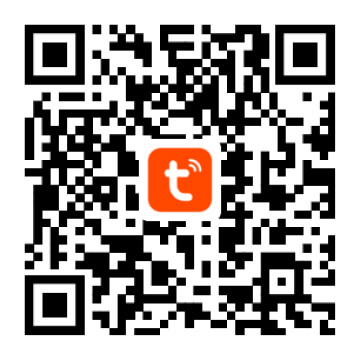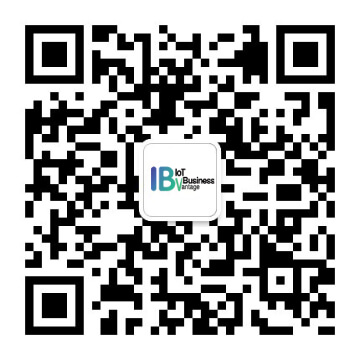智能摄像头扫码配网
更新时间:2024-08-21 10:12:50下载pdf
扫码配网指的是设备扫描 App 生成的二维码,二维码包含 Wi-Fi 信息和 token,设备扫描成功后,主动连接到路由器去云端进行激活的配网方式。主要针对具有摄像头扫描功能和 Wi-Fi 模组的设备,所以通常是智能摄像头或是带有摄像头的设备(如可视门铃)支持二维码配网。
ThingSmartBusinessExtensionKit 组件提供了比 ThingSmartActivator 更多的功能。如果您仍直接在使用 ThingSmartActivator,请参考 此链接。
注册配网类型
基座初始化时,需要注册一下配网的类型,扫码配网模式对应为 ThingSmartActivatorTypeQRCodeModel。
接口说明
/// Initialize network configuration types
/// @param typeList Network configuration types
- (void)registerWithActivatorList:(NSArray<ThingSmartActivatorTypeModel *>*)typeList;
参数说明
| 参数 | 说明 |
|---|---|
| typeList | 配网类型列表 |
查询 Token
使用涂鸦 SDK 获取配网 Token,然后进行配网。Token 的有效期为 10 分钟,且配置成功后就会失效。再次配网时,需要重新查询 Token。
接口说明
- (void)getTokenWithHomeId:(long long)homeId
success:(ThingSuccessString)success
failure:(ThingFailureError)failure;
参数说明
| 参数 | 说明 |
|---|---|
| homeId | 设备将要绑定到的家庭的 ID |
| success | 成功回调,返回配网 Token |
| failure | 失败回调,返回失败原因 |
二维码字符串
获取到配网 Token 后,还需要有期望设备连接的 Wi-Fi 的 ssid 和密码,通过下面的方式拼接成字符串,然后根据该字符串生成一个二维码图片。
Objective-C
NSDictionary *dictionary = @{
@"s": self.ssid,
@"p": self.pwd,
@"t": self.token
};
NSData *jsonData = [NSJSONSerialization dataWithJSONObject:dictionary options:0 error:nil];
self.wifiJsonStr = [[NSString alloc] initWithData:jsonData encoding:NSUTF8StringEncoding];
Swift
let dictionary = [
"s": self.ssid,
"p": self.pwd,
"t": self.token
]
let jsonData = JSONSerialization.data(withJSONObject: dictionary, options: JSONSerialization.WritingOptions.Element)
self.wifiJsonStr = String(data: jsonData, encoding: String.Encoding.utf8)
开始搜索
开始搜索时,需要传入已注册的 typeList。
接口说明
/// Start searching
/// @param typeList Network configuration types
- (void)startSearch:(NSArray <ThingSmartActivatorTypeModel *>*)typeList;
参数说明
| 参数 | 说明 |
|---|---|
| typeList | 配网类型列表 |
停止搜索
接口说明
/// Stop searching
/// @param typeList Network configuration types
/// @param clearCache Whether to clear the cache
- (void)stopSearch:(NSArray <ThingSmartActivatorTypeModel *>*)typeList clearCache:(BOOL)clearCache;
参数说明
| 参数 | 说明 |
|---|---|
| typeList | 配网类型列表 |
| clearCache | 是否清空当前搜索设备缓存 |
搜索设备回调
设备配网成功之后,会通过搜索回调返回设备信息。如果失败,则会返回对应的失败信息。
发现设备回调
接口说明
/// Device search callback
/// @param service Search instance
/// @param type Network configuration type
/// @param device Discovered device
/// @param errorModel Error callback
- (void)activatorService:(id<ThingSmartActivatorSearchProtocol>)service
activatorType:(ThingSmartActivatorTypeModel *)type
didFindDevice:(nullable ThingSmartActivatorDeviceModel *)device
error:(nullable ThingSmartActivatorErrorModel *)errorModel;
参数说明
| 参数 | 说明 |
|---|---|
| service | 配网服务 |
| type | 配网类型,此处返回 ThingSmartActivatorTypeQRCodeModel |
| device | 发现设备,返回此次配网的设备模型,失败时返回 nil |
| errorModel | 如果配网失败或者超时,返回此模型,成功时返回 nil |
设备信息更新回调
接口说明
/// Device information update or device rediscovered on a different channel
/// @param service Search instance
/// @param type Network configuration type
/// @param device Device model
- (void)activatorService:(id<ThingSmartActivatorSearchProtocol>)service
activatorType:(ThingSmartActivatorTypeModel *)type
didUpdateDevice:(ThingSmartActivatorDeviceModel *)device;
参数说明
| 参数 | 说明 |
|---|---|
| service | 配网服务 |
| type | 配网类型,此处返回 ThingSmartActivatorTypeQRCodeModel |
| device | 返回变化的设备信息 |
错误码说明
配网失败或者配网超时的情况下,会返回 ThingSmartActivatorErrorModel。
@interface ThingSmartActivatorErrorModel : NSObject
@property (nonatomic, strong) ThingSmartActivatorDeviceModel *deviceModel;
@property (nonatomic) NSError *error;
@end
其中 error 对应的错误码,定义在 ThingSmartActivatorDiscoveryError 中。下表展示了常见错误与说明。
| 错误码 | 配网错误 |
|---|---|
| ThingSmartActivatorDiscoveryErrorTimeout | 配网超时。 |
| ThingSmartActivatorDiscoveryErrorDeviceAlreadyBound | 设备强绑定错误。该设备已经被用户绑定,无法被第二个用户绑定,需要第一个用户解绑才能完成配网操作。 |
| ThingSmartActivatorDiscoveryErrorAPPUnsupportProduct | 配网账号的 App 和产品没有绑定关系。 |
| ThingSmartActivatorDiscoveryErrorTokenExpired | Token 失效。 |
| ThingSmartActivatorDiscoveryErrorGuestNotSupportStrongBind | 游客模式无法对强绑定设备进行配网。 |
| ThingSmartActivatorDiscoveryErrorRemoteApiParamIllegal | 接口参数不合法。 |
示例代码
Swift
class qrmodeConfigurationVC: UITableViewController {
private var token: String = ""
private var typeModel:ThingSmartActivatorTypeQRCodeModel = {
let type = ThingSmartActivatorTypeQRCodeModel()
type.type = ThingSmartActivatorType.qrCode
type.typeName = NSStringFromThingSmartActivatorType(ThingSmartActivatorType.qrCode)
type.timeout = 120
return type
}()
lazy var discovery: ThingSmartActivatorDiscovery = {
let discovery = ThingSmartActivatorDiscovery()
discovery.register(withActivatorList: [self.typeModel])
discovery.setupDelegate(self)
discovery.loadConfig()
return discovery
}()
private func startConfiguration() {
guard let homeID = Home.current?.homeId else { return }
SVProgressHUD.show(withStatus: NSLocalizedString("Requesting for Token", comment: ""))
ThingSmartActivator.sharedInstance()?.getTokenWithHomeId(homeID, success: { [weak self] (token) in
guard let self = self else { return }
self.token = token ?? ""
self.startConfiguration(with: self.token)
}, failure: { (error) in
let errorMessage = error?.localizedDescription ?? ""
SVProgressHUD.showError(withStatus: errorMessage)
})
}
private func startConfiguration(with token: String) {
SVProgressHUD.show(withStatus: NSLocalizedString("Configuring", comment: ""))
guard let homeID = Home.current?.homeId else { return }
typeModel.token = self.token;
typeModel.spaceId = homeID
discovery.startSearch([typeModel])
}
}
extension qrmodeConfigurationVC: ThingSmartActivatorSearchDelegate {
func activatorService(_ service: ThingSmartActivatorSearchProtocol, activatorType type: ThingSmartActivatorTypeModel, didFindDevice device: ThingSmartActivatorDeviceModel?, error errorModel: ThingSmartActivatorErrorModel?) {
if (errorModel != nil) {
// Error
SVProgressHUD.showError(withStatus: errorModel?.error.localizedDescription)
return
}
if (device != nil) {
if device?.step == ThingActivatorStep.found {
// device find
}
}
}
func activatorService(_ service: ThingSmartActivatorSearchProtocol, activatorType type: ThingSmartActivatorTypeModel, didUpdateDevice device: ThingSmartActivatorDeviceModel) {
if device.step == ThingActivatorStep.intialized {
// Success
let name = device.name
SVProgressHUD.showSuccess(withStatus: NSLocalizedString("Successfully Added \(name)", comment: "Successfully added one device."))
navigationController?.popViewController(animated: true)
}
}
}
Objective-C
/// Get token
- (void)getToken {
ThingSmartActivator *qrActivator = [[ThingSmartActivator alloc] init];
[qrActivator getTokenWithHomeId:homeId success:^(NSString *token) {
NSLog(@"getToken success: %@", token);
[self startConfigWiFi:token];
} failure:^(NSError *error) {
NSLog(@"getToken failure: %@", error.localizedDescription);
}];
}
/// Start activate
- (void)startConfigQRCode:(NSString *)token {
ThingSmartActivatorTypeQRCodeModel *qrCodeModel = [[ThingSmartActivatorTypeQRCodeModel alloc] init];
qrCodeModel.type = ThingSmartActivatorTypeQRCode;
qrCodeModel.typeName = NSStringFromThingSmartActivatorType(ThingSmartActivatorTypeQRCode);
qrCodeModel.timeout = 120;
qrCodeModel.spaceId = homeId;
[self.discovery registerWithActivatorList:@[qrCodeModel]];
[self.discovery setupDelegate:self];
[self.discovery startSearch:@[qrCodeModel]];
}
- (void)activatorService:(id<ThingSmartActivatorSearchProtocol>)service activatorType:(ThingSmartActivatorTypeModel *)type didFindDevice:(ThingSmartActivatorDeviceModel *)device error:(ThingSmartActivatorErrorModel *)errorModel {
if (errorModel) {
[self _connectWifiError:errorModel];
return;
}
if (device) {
[self _handleDevice:device];
}
}
- (void)activatorService:(id<ThingSmartActivatorSearchProtocol>)service activatorType:(ThingSmartActivatorTypeModel *)type didUpdateDevice:(ThingSmartActivatorDeviceModel *)device {
if (device) {
[self _handleDevice:device];
}
}
- (void)_handleDevice:(ThingSmartActivatorDeviceModel *)device {
ThingActivatorStep step = device.step;
if (step == ThingActivatorStepFound) {
// discovery device
} else if (step == ThingActivatorStepRegisted) {
// device registe
} else if (step == ThingActivatorStepIntialized) {
/// activated successfully
}
}
- (ThingSmartActivatorDiscovery *)discovery {
if (!_discovery) {
_discovery = [[ThingSmartActivatorDiscovery alloc] init];
}
return _discovery;
}
该内容对您有帮助吗?
是意见反馈该内容对您有帮助吗?
是意见反馈






